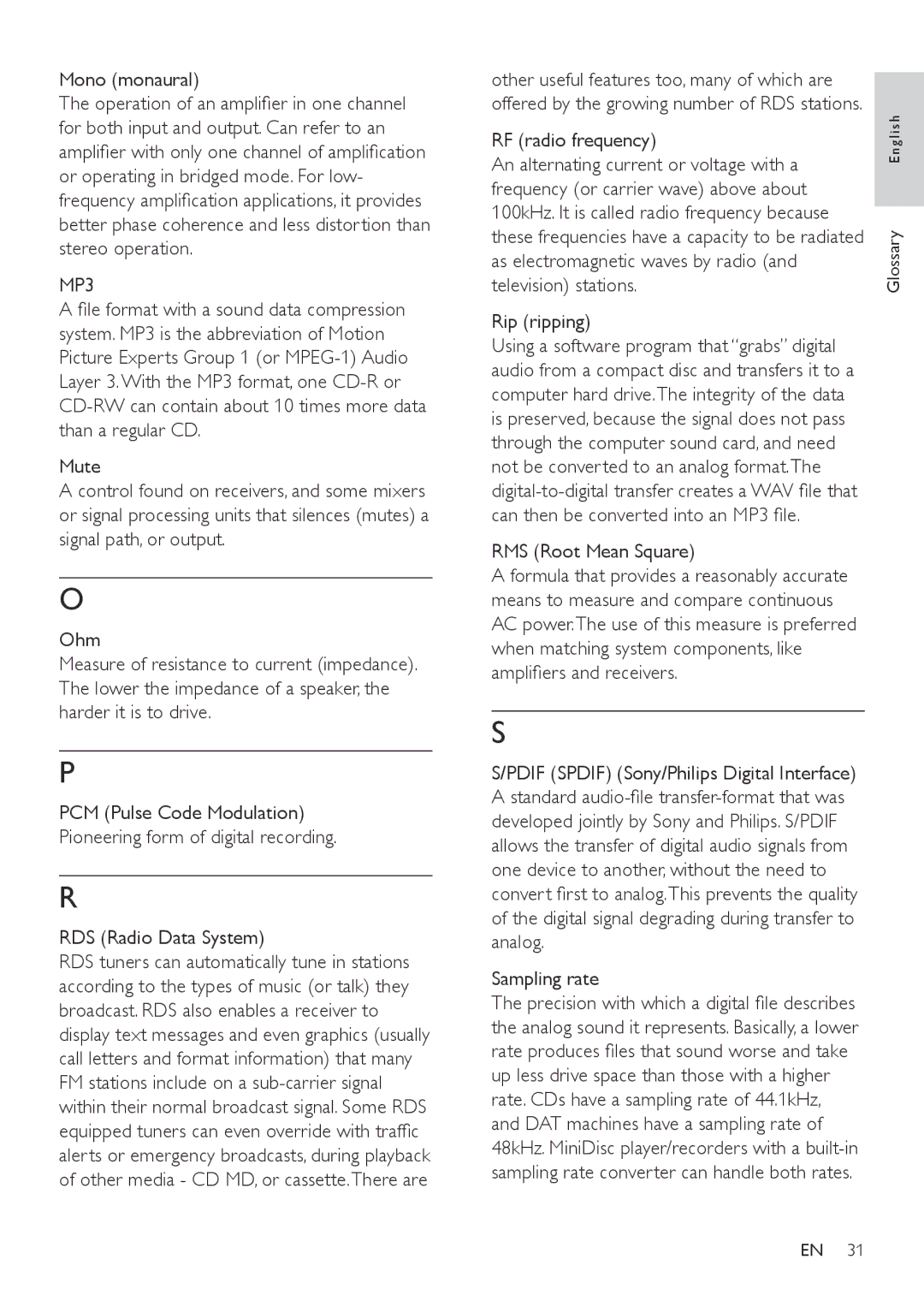
Mono (monaural)
The operation of an amplifier in one channel for both input and output. Can refer to an amplifier with only one channel of amplification or operating in bridged mode. For low- frequency amplification applications, it provides better phase coherence and less distortion than stereo operation.
MP3
A file format with a sound data compression system. MP3 is the abbreviation of Motion Picture Experts Group 1 (or
Mute
A control found on receivers, and some mixers or signal processing units that silences (mutes) a signal path, or output.
O
Ohm
Measure of resistance to current (impedance). The lower the impedance of a speaker, the harder it is to drive.
P
PCM (Pulse Code Modulation)
Pioneering form of digital recording.
R
RDS (Radio Data System)
RDS tuners can automatically tune in stations according to the types of music (or talk) they broadcast. RDS also enables a receiver to display text messages and even graphics (usually call letters and format information) that many FM stations include on a
other useful features too, many of which are offered by the growing number of RDS stations.
RF (radio frequency)
An alternating current or voltage with a frequency (or carrier wave) above about 100kHz. It is called radio frequency because these frequencies have a capacity to be radiated as electromagnetic waves by radio (and television) stations.
Rip (ripping)
Using a software program that “grabs” digital audio from a compact disc and transfers it to a computer hard drive.The integrity of the data is preserved, because the signal does not pass through the computer sound card, and need not be converted to an analog format.The
RMS (Root Mean Square)
A formula that provides a reasonably accurate means to measure and compare continuous AC power.The use of this measure is preferred when matching system components, like amplifiers and receivers.
S
S/PDIF (SPDIF) (Sony/Philips Digital Interface) A standard
Sampling rate
The precision with which a digital file describes the analog sound it represents. Basically, a lower rate produces files that sound worse and take up less drive space than those with a higher rate. CDs have a sampling rate of 44.1kHz, and DAT machines have a sampling rate of 48kHz. MiniDisc player/recorders with a
Glossary English
EN 31
